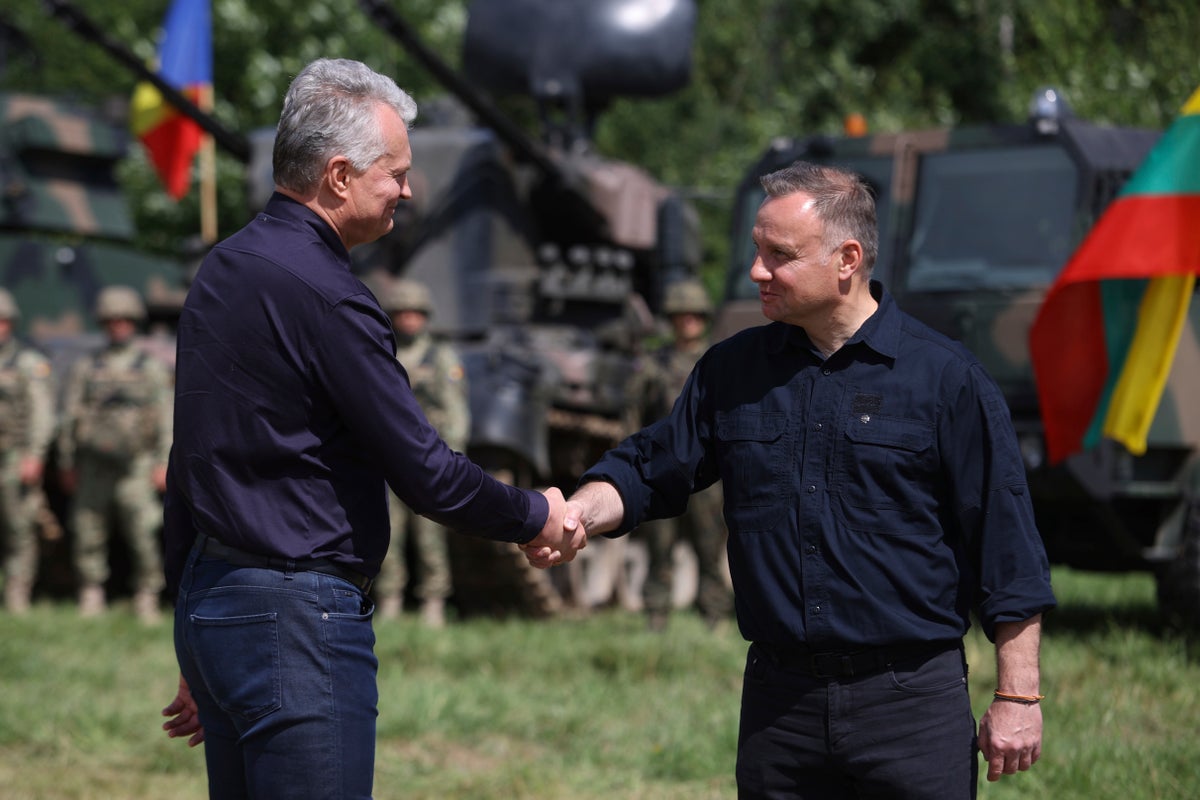
The presidents of NATO members Poland and Lithuania voiced confidence Thursday that allied troops can fully safeguard a strategically vital corridor, which links their countries, between Russian ally Belarus and a Russian Baltic Sea exclave.
Concern over NATO's ability to defend the so called Suwalki Gap, a 70-kilometer (43-mile) wedge joining Poland and Lithuania, has rocketed since Russia invaded Ukraine on Feb. 24. The bottleneck separates Belarus from the Kaliningrad exclave, where Russia's Baltic Fleet — and nuclear-capable missiles — are based.
President Andrzej Duda of Poland and Lithuania’s President Gitanas Nauseda visited the sparsely populated area Thursday and met with NATO troops on the Polish and the Lithuanian side.
“This is a very sensitive area and the eyes of an aggressor could potentially be directed here,” Nauseda said in Szypliszki, on the Polish side.
The corridor links Lithuania, Estonia and Latvia — all former Soviet republics bordering Russia — to Poland and other NATO members.
“We have decided to come to this place ... to show that it is safe ... just because of what you can see here today: the daily, calm but full of vigilance service of the Polish, Lithuanian and other NATO troops,” Poland's Duda said.
At the urging of Poland and the Baltic states, NATO leaders decided at a summit last week in Madrid to significantly increase the number of allied troops in Eastern Europe. At the Suwalki Gap, battalions numbering hundreds of troops are to be boosted to brigades with thousands of troops.
The presidents were accompanied on their visit by their defense ministers. The mobile command unit of the U.S.-led Multinational Division North East is currently going through field exercises in the Szypliszki area.
From there, the two presidents traveled to Mariampoli, Lithuania, to meet a German-led logistical battalion.







